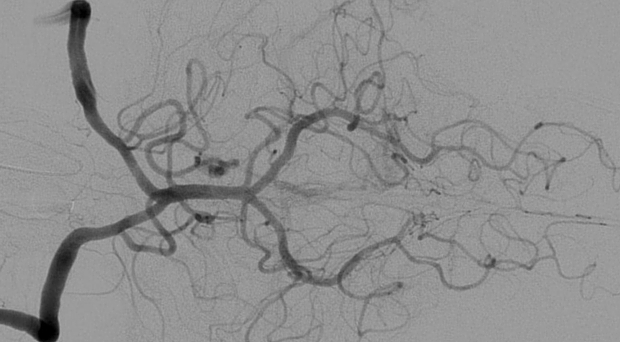
 Dr Luca Saba received his MD from the University of Cagliari, Italy in 2002. Today he works in the A.O.U. of Cagliari in the fields of multi-detector-row computed tomography, magnetic resonance, ultrasound, neuroradiology, and diagnostics in vascular sciences.
Dr Luca Saba received his MD from the University of Cagliari, Italy in 2002. Today he works in the A.O.U. of Cagliari in the fields of multi-detector-row computed tomography, magnetic resonance, ultrasound, neuroradiology, and diagnostics in vascular sciences.
What led to your interest in the field of neurovascular imaging?
The field of neurovascular imaging is a great field of research. I started to study it when my residency in radiology began because my Professor at that time was a renowned vascular radiologist. He transferred the passion of the vascular system to me.
I started to study the non-invasive approaches for the diagnosis of the carotid artery pathology and the leap to the brain pathology was quite small. From that moment I started to study the relationship between vascular and brain pathologies.
How has the field advanced during your career?
In the last fifteen years there have been two main advances in the imaging. The first of which is the multispectral imaging in the computed tomography (CT) technology, that allows us to assess the tissues of the body with new perspectives.
And secondly the high magnetic resonance imaging (MRI) field (3T or more) that allows to explore, with an exquisite level of detail, some types of pathologies.
In your opinion, what has been the most exciting discovery in this field?
A lot of important and exciting discoveries in the neurovascular field have occurred in the last 10-15 years.
This is a million dollar question! A lot of important and exciting discoveries in the neurovascular field have occurred in the last 10-15 years. I think that one of the most important one is the concept of the ‘carotid artery vulnerable plaque’.
In the past years, after the NASCET study it was believed that the degree of the carotid artery stenosis was the lead factor for the stroke development and in the world patients were selected for carotid endarterectomies or stenting procedures according to this parameter.
The CT and MR technology allowed us to understand that the composition of the carotid artery plaque, and not the degree of stenosis, represent the critical factor for the development of a cerebrovascular event.
What do you hope will be achieved in the next ten years?
It is my opinion that the future of neurovascular imaging will be to identify the features that predict the development of a pathology in order to activate early therapies.
Comments